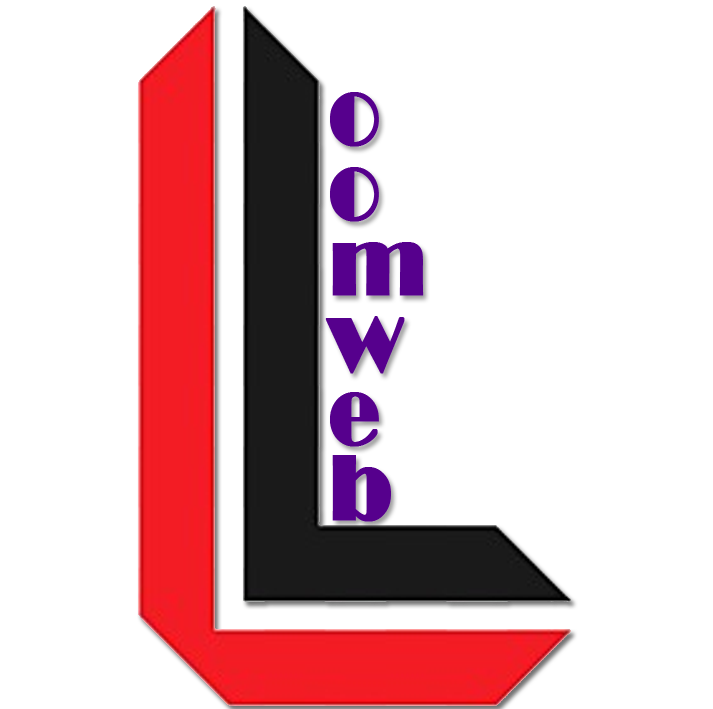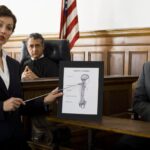California Personal Injury Lawyer: Navigating the complexities of personal injury law in California can be daunting. This guide provides a comprehensive overview of the legal process, from initial consultation to potential settlement or trial. We’ll explore common injury types, the role of insurance companies, and strategies for maximizing your compensation. Understanding your rights and options is crucial after an accident, and this resource aims to empower you with that knowledge.
We’ll delve into the specifics of California’s personal injury laws, outlining the various types of cases handled, the steps involved in pursuing a claim, and the crucial role of a skilled attorney. We’ll also address common concerns, such as selecting the right lawyer, understanding different fee structures, and effectively communicating with your legal team. This guide aims to provide clarity and support throughout your journey.
Trial and Verdict
Going to trial in a personal injury case is a significant step, often representing the culmination of months, or even years, of investigation, negotiation, and preparation. It’s a formal legal process where the plaintiff (the injured party) and the defendant (the responsible party) present their cases before a judge and, typically, a jury. The goal is to determine liability—who is at fault—and the extent of damages—the compensation owed to the injured party.
The trial itself involves several stages, beginning with jury selection (if a jury trial is chosen). Both sides will question potential jurors to ensure an impartial panel. Then, each side presents its case, including witness testimony, expert opinions, and evidence. This is followed by closing arguments, where attorneys summarize their cases and urge the jury to rule in their favor. Finally, the jury deliberates and reaches a verdict.
Jury’s Role in Determining Liability and Damages
The jury plays a crucial role in personal injury trials. Their primary responsibility is to weigh the evidence presented by both sides and determine the facts of the case. This includes deciding whether the defendant was negligent (failed to exercise reasonable care) and whether that negligence directly caused the plaintiff’s injuries. If the jury finds the defendant liable, they then determine the amount of damages the plaintiff is entitled to. This can include compensation for medical expenses, lost wages, pain and suffering, and other related losses. The judge oversees the trial process, ensuring it proceeds fairly and according to the law, and instructs the jury on the relevant legal principles.
The Appeals Process
If either party is dissatisfied with the jury’s verdict, they may have the option to appeal the decision to a higher court. Appeals typically focus on legal errors made during the trial, such as improper admission of evidence or incorrect jury instructions. The appeals court does not retry the case; instead, it reviews the trial record to determine whether any legal errors occurred that affected the outcome. The appeals court may uphold the original verdict, reverse it, or remand the case back to the lower court for a new trial. The appeals process can be lengthy and complex, often involving extensive legal briefs and arguments. For example, a case involving a disputed expert witness testimony might be appealed if the lower court improperly admitted or excluded that testimony, leading to an arguably unfair verdict. The success of an appeal depends on the strength of the legal grounds and the persuasiveness of the arguments presented.
Client Testimonials and Case Studies (Illustrative, not actual cases): California Personal Injury Lawyer
At California Injury Lawyers, we understand that choosing the right legal representation can be a daunting task, especially during a difficult time. We strive to provide exceptional service and achieve the best possible outcomes for our clients. The following case studies illustrate our commitment to achieving justice for those who have been injured. These are hypothetical examples and do not represent specific cases handled by our firm. However, they demonstrate the types of situations we handle and the successful strategies we employ.
The success of our firm is built on our dedication to our clients and their recovery. We are proud of the positive experiences our clients have shared with us.
Motorcycle Accident Case Study
A young motorcyclist, Maria, was severely injured in a collision with a car that ran a red light. She suffered multiple fractures, requiring extensive surgery and physical therapy. Our firm aggressively pursued the at-fault driver’s insurance company, demonstrating the driver’s negligence through witness testimony, police reports, and accident reconstruction experts. We successfully negotiated a settlement that covered Maria’s medical expenses, lost wages, and pain and suffering, allowing her to focus on her recovery.
Slip and Fall Case Study
Mr. Johnson, a senior citizen, suffered a severe hip fracture after slipping on a wet floor in a local grocery store. The store initially denied responsibility, but our firm investigated the incident thoroughly, obtaining security footage and witness statements. We argued that the store’s negligence in maintaining a safe environment led directly to Mr. Johnson’s injuries. The case proceeded to trial, and the jury found in favor of Mr. Johnson, awarding him a significant sum to cover his medical bills and ongoing care.
Car Accident Case Study
David, a construction worker, was involved in a rear-end collision caused by a distracted driver. He suffered a whiplash injury and required extensive chiropractic care. His lost wages, due to his inability to perform his physically demanding job, were substantial. Our firm built a strong case, presenting medical evidence, wage documentation, and expert testimony regarding the long-term effects of his injury. We successfully negotiated a settlement that fully compensated David for his medical expenses, lost wages, and pain and suffering.
Positive Client Feedback
We prioritize client satisfaction and are proud of the positive feedback we consistently receive. Here are some examples:
- “The entire team at California Injury Lawyers was incredibly supportive and professional. They kept me informed every step of the way and fought tirelessly for me.” – Maria S.
- “I was overwhelmed after my accident, but California Injury Lawyers made the legal process much easier to understand. They got me a great settlement.” – Mr. Johnson
- “I highly recommend California Injury Lawyers. They are knowledgeable, responsive, and truly care about their clients.” – David L.
Choosing the Right Legal Strategy
Selecting the optimal legal strategy in a personal injury case is crucial for maximizing the client’s chances of a successful outcome. The approach taken will significantly impact the negotiation process, the likelihood of settlement, and the potential value of any award. A skilled attorney will carefully analyze the specifics of each case to tailor a strategy that best aligns with the available evidence and the client’s goals.
The choice of legal strategy hinges on several interconnected factors. These include the severity of the injuries, the strength of the evidence supporting liability, the insurance coverage of the responsible party, and the client’s individual circumstances and objectives. A straightforward case with clear liability and substantial damages might necessitate a different approach than a complex case involving multiple parties or disputed liability.
Settlement Negotiation versus Litigation
Negotiating a settlement directly with the insurance company is often the most efficient and cost-effective route. This approach can be particularly beneficial in cases with strong evidence of liability and a clear understanding of the damages. However, if negotiations fail to produce a fair settlement offer, litigation becomes necessary. Litigation involves filing a lawsuit and proceeding through the court system, which can be a lengthier and more expensive process but may be essential to obtain a just outcome in cases where the insurance company is unwilling to negotiate reasonably. The decision to pursue settlement or litigation is a strategic one, carefully weighed against the potential benefits and drawbacks of each path.
Comparative Negligence and its Impact on Strategy, California personal injury lawyer
In many jurisdictions, the doctrine of comparative negligence applies. This means that if the injured party is found to be partially at fault for the accident, their recovery of damages will be reduced proportionally. Understanding the potential application of comparative negligence is critical in shaping the legal strategy. If the plaintiff’s own negligence is a significant factor, the attorney might focus on minimizing the degree of fault attributed to the client while simultaneously aggressively pursuing liability against the defendant. This could involve careful investigation of the accident scene, witness testimonies, and expert analysis to build a strong defense against claims of contributory negligence. For instance, if a pedestrian was hit by a car while jaywalking, a skilled attorney would explore all evidence mitigating the pedestrian’s responsibility, such as poor lighting or the driver’s excessive speed.
Damages: Economic versus Non-Economic
Personal injury cases involve two primary types of damages: economic and non-economic. Economic damages are readily quantifiable, such as medical bills, lost wages, and property damage. Non-economic damages, such as pain and suffering, emotional distress, and loss of consortium, are more subjective and challenging to value. The legal strategy should account for the balance between these types of damages. Cases with substantial economic damages might be easier to settle, while cases heavily reliant on non-economic damages may require a more aggressive litigation strategy to demonstrate the full extent of the client’s suffering and obtain fair compensation. For example, a case involving a catastrophic injury leading to significant medical expenses and long-term disability would focus heavily on documenting and proving the economic losses, while a case involving a whiplash injury might emphasize the lasting pain and suffering experienced by the plaintiff.
Successfully navigating a personal injury claim in California requires understanding the legal landscape, your rights, and the strategies for achieving a favorable outcome. This guide has provided a foundational understanding of the process, from initial consultation and investigation to settlement negotiations or trial. Remember, seeking legal counsel from a qualified California personal injury lawyer is paramount to protecting your interests and securing the compensation you deserve. Don’t hesitate to seek the expert guidance you need to navigate this challenging process.
California personal injury lawyers handle a wide range of accident cases, ensuring clients receive the compensation they deserve. The legal landscape, however, varies geographically; for instance, if your accident occurred in Florida, you might need to seek counsel from a clearwater personal injury lawyer , depending on the location. Returning to California, finding a skilled attorney with experience in your specific type of injury is crucial for a successful outcome.
Securing competent legal representation is crucial after a personal injury accident in California. The process can be complex, navigating insurance companies and legal procedures requires expertise. For those seeking similar assistance on the East Coast, a reputable option is a philly personal injury lawyer , showcasing the widespread need for specialized legal counsel in such cases. Ultimately, California residents should prioritize finding a lawyer with a proven track record of success in personal injury claims.
Finding the right California personal injury lawyer can be crucial after an accident. Similar legal expertise is needed across the country, and if your case involves events in Connecticut, you might need to research a firm specializing in that area, such as a hartford personal injury lawyer. Ultimately, securing skilled legal representation, whether in California or elsewhere, is key to achieving a favorable outcome in your personal injury claim.






